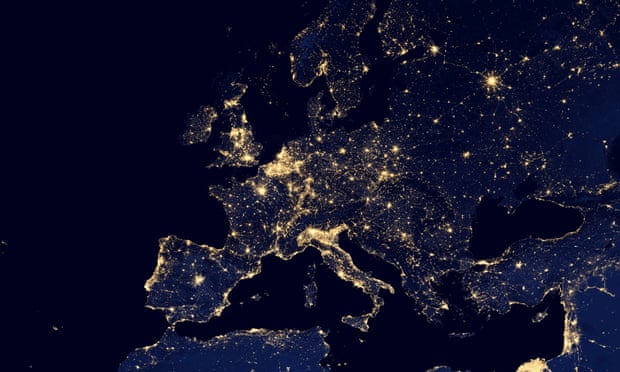
Transition to blue light radiation across Europe increases suppression of sleep hormone melatonin, say scientists
Blue light from artificial sources is on the rise, which may have negative consequences for human health and the wider environment, according to a study.
Academics at the University of Exeter have identified a shift in the kind of lighting technologies European countries are using at night to brighten streets and buildings. Using images produced by the International Space Station (ISS), they have found that the orange-coloured emissions from older sodium lights are rapidly being replaced by white-coloured emissions produced by LEDs.
While LED lighting is more energy-efficient and costs less to run, the researchers say the increased blue light radiation associated with it is causing “substantial biological impacts” across the continent. The study also claims that previous research into the effects of light pollution have underestimated the impacts of blue light radiation.
Chief among the health consequences of blue light is its ability to suppress the production of melatonin, the hormone that regulates sleep patterns in humans and other organisms. Numerous scientific studies have warned that increased exposure to artificial blue light can worsen people’s sleeping habits, which in turn can lead to a variety of chronic health conditions over time.
The increase in blue light radiation in Europe has also reduced the visibility of stars in the night sky, which the study says “may have impacts on people’s sense of nature”. Blue light can also alter the behavioural patterns of animals including bats and moths, as it can change their movements towards or away from light sources.
The UK is among the countries singled out in the study for being most affected by the impacts of the transition to LED night lighting, especially the risk of melatonin suppression. Fifty-one per cent of street lights in the UK were powered by LEDs in 2019.
Italy, Romania, Ireland and Spain were also identified as countries more vulnerable to the impacts of blue light radiation due to their recent transitions to LED night lights. The impacts have been felt much less in countries such as Austria and Germany, which still power much of their night lighting using older gas and fluorescent bulbs.
The research was published in the journal Science Advances.
Darren Evans, professor of ecology and conservation at Newcastle University, who was not involved in the study, hailed it as “an extraordinary piece of work”, and said it aligned with his own findings on how local street lighting has dramatically reduced the abundance of nocturnal insect populations.
The transition to LEDs in the UK “poorly considered” the ecological and human costs of such a policy, said Evans.
David Smith, of the conservation charity Buglife, said: “Light pollution can dramatically impact invertebrates, whether that be how they go about their daily lives, or even by reducing populations of species that live in habitats lit by LED lights. Given that invertebrates are already suffering dramatic declines, it is vital that we relieve them from all pressures to provide the best chance of recovery.”
Smith urged the UK government tointroduce national targets to reduce levels of light pollution, saying measurement in the country was patchy and uncoordinated.
“We should consider light from a wider biological perspective than that of just humans [and] we must focus on better quality lighting that is harmonious with our natural world. Better quality and lower levels of lighting would help save energy, and lower financial costs, while also making our environment safer for invertebrates.”
Some councils in England are already trying to reduce the impact of LED lighting, which Evans says are “encouraging signs” that action is being taken. He points out that some authorities are dimming the lights during night hours, and are changing the bandwidths of their LED bulbs to produce less harmful blue light, as seen on the Isle of Wight, which uses warmer bulbs that emit less blue light.
